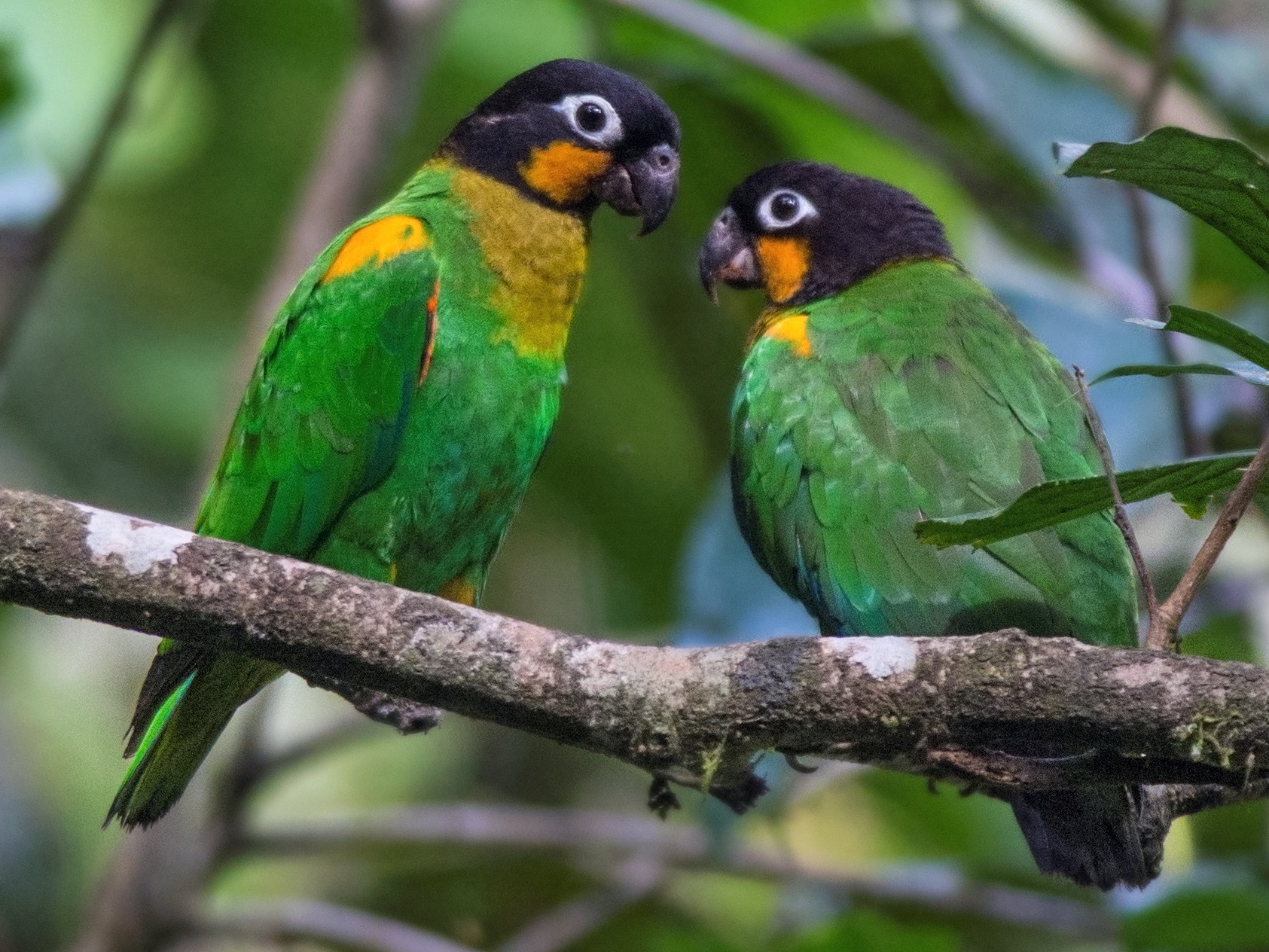
The orange-cheeked parrot (Pyrrhura barrabandi), also known as Barraband’s parrot, is a stunning avian species that captures attention with its rich combination of green, red, blue, and orange, highlighted by its distinctive cheeks!
Measuring around 10 inches (25 cm) from head to tail, the orange-cheeked parrot is primarily green, but its instantly vibrant appearance comes from its orange-yellow cheeks, olive-yellow breast, and yellow thighs. Its wing shoulder areas and lesser wing-covers are adorned with shades of orange-yellow and red. The longer and shorter wing feathers are mainly black, while the middle tail feathers are tipped with a striking blue hue. Other tail feathers feature yellow markings on their inner webs. Completing its look is a black hood on its head, a black bill, and a white ring around its eyes.
Female orange-cheeked parrots mature sexually at one year of age, while males reach maturity at two years.
Juvenile birds display a paler coloring on their heads, with olive green intermingled with brown on their foreheads, nape, cheeks, and chin.
These birds are primarily found in the Amazonian Andes, inhabiting humid lowland forests in the northwestern, southwestern, and south-central Amazon Basin in South America.
They can be found in regions ranging from Brazil, southern Venezuela, southern Bolivia, Ecuador, Peru, and westward to eastern Colombia.

Orange-cheeked parrots are more commonly found in upland forested areas.
In the wild, these parrots feed on seeds, fruits, and wasp larvae by foraging in the canopy or just below it.

In captivity, their breeding season begins in March, while in the wild, they breed between September and December in tree hollows. The female lays up to six eggs in the hollow, which she then incubates for about 20 days. While she incubates the eggs, the male assists her in raising the young. The chicks become fledged after 35 to 45 days and gain independence after 50 days.
Although this species is currently threatened by deforestation, it is still categorized as of “Least Concern” on the IUCN Red List.





